The Article
The Neve RNHP Precision Headphone Amplifier
12th December 2016
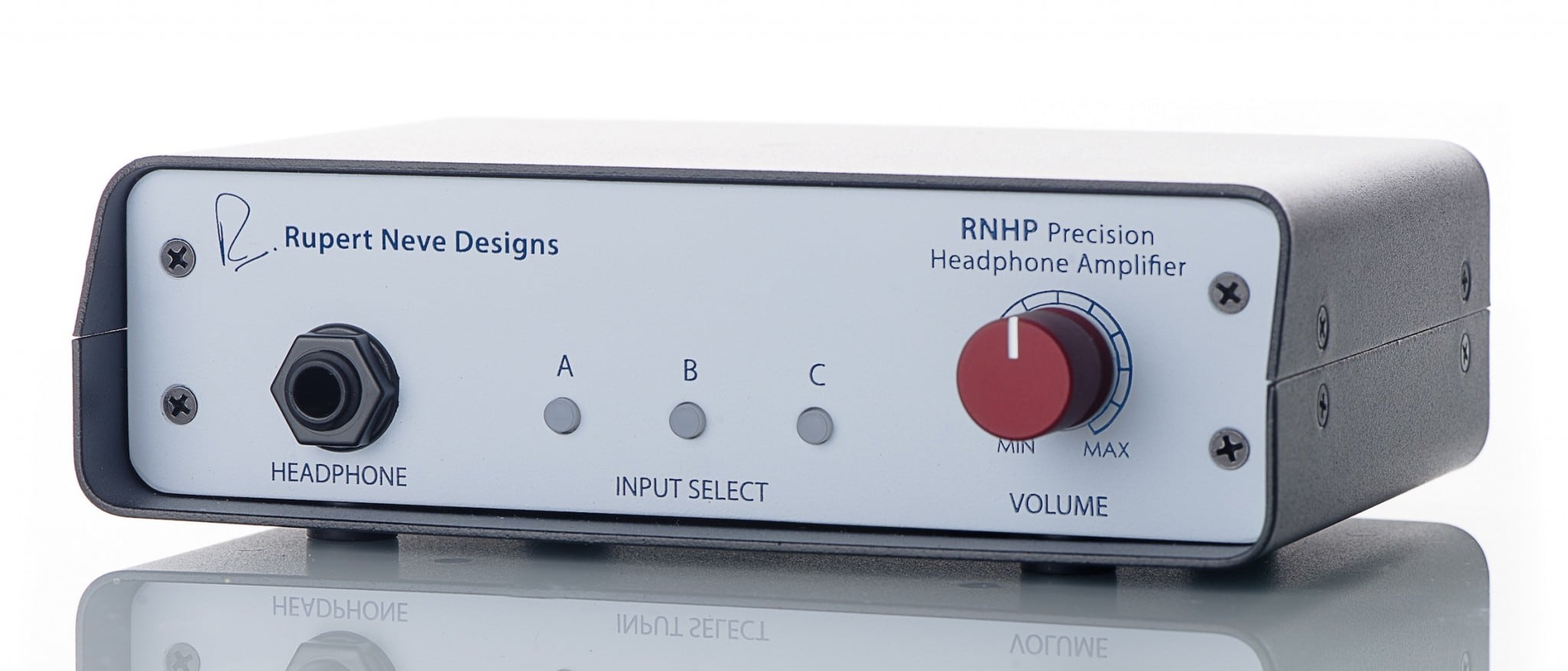
Born in the Pro studio environment but also for use as a home consumer product, Paul Rigby reviews the Rupert Neve Designs RNHP headphone amplifier
Rupert Neve? A studio god. A man who was present at the recording of some of music’s most prestigious albums. In spirit, that is. The likes of Steely Dan, Nirvana, Pink Floyd, Dire Straits, Quincy Jones, George Clinton, Michael Jackson, Chick Corea and many more musical legends all used (an many still use today) Rupert Neve Designs (RND) consoles as the basis for their album recording.
I was shocked (no, really, I was) when I heard that we mere minions would be able to reach out and take a piece of Neve treasure home to our listening rooms. Initially designed as a headphone amplifier for the studio, the snappily monikered RNHP can, according the company, drive high-impedance (up to 600 Ohm) headphones even during the loudest, most dynamic moments with a near-zero output impedance (.01 Ohm at 1kHz).
Machined from aluminium and finished in anodised red, the RNHP includes stereo RCA (phono sockets), stereo 3.5mm input calibrated, says the company, to work with mobile devices such as phones, tablets and laptops. There’s also calibrated +4dBu line input. The combo jack accepts either XLR or TRS inputs for balanced professional devices.
Spanning just 165 x 117 x 48mm, the RNHP is housed in a solid-steel chassis with an overhang at the back to protect the connectors and main level control. Rubberised feet are fitted to the underneath.
Check out the annotated images here to see how the controls work, specifically.
I wanted to know more about RNHP and was honoured to talk to Rupert Neve himself about the hardware and wondered why he had decided to enter the consumer market at all, “The truth is that this is a market that we are being pulled into and not one that we are pushing into,” said Neve. “The RNHP was designed for the professional recordist and mixer to have a reference quality headphone amplifier for use in location and in studio recording and mixing tasks. It has since been discovered by the consumer headphone community. We honestly had no idea that this market segment was so large and had such an interest in the type of gear that is found in recording studios.”
Once Neve did discover how large this segment was, he must have also quickly realised how much competition was facing his product and, hence, required an edge. Neve revealed that he had one, “The amplifier design offers the features defined by market survey and provides exceptional phase, frequency and noise performance with extremely low output impedance for high damping factor which reduces any resonant effects of the headphone element, producing consistent performance across varying headphone impedances and response characteristics.”
As you might expect, Neve didn’t produce this amplifier single-handedly, “We have a wonderful team of design engineers who are fully versed in all the qualities for which the name Rupert Neve has become famous over many years,” he said. “The performance and standards are entirely to my satisfaction. I am sure you understand that there are many facets in bringing to market a design of even the simplest equipment. It is not simply a matter of choosing components and assembling them.”
And yet, the ‘Pro’ market has not been forgotten by the RNHP, “We wanted to provide the user with the ability to interface with any equipment from professional XLR +4dB, RCA -10dB or 3.5mm portable players. All input have been both impedance and gain optimised to best interface with the external devices.”
I have to say, though, that two aspects of the design of this headphone amplifier did disturb me before I settled down for a full sound test. The first was that the unit used a switching power supply. Neve didn’t see what the problem was, though, “The power supply was selected by means of extensive performance testing and its performance contributes to the low noise floor of the RNHP. Switch mode power supplies operate with universal input voltage and frequency which allows worldwide compatibility and offers far higher efficiency in operation compared to linear power supplies. Linear power supplies must be optimised for a particular AC mains voltage and frequency and have compromised performance when operating under varying mains supplies.”
Well, we’d see if the sound tests themselves would agree or not with that. The other point of order was the chassis. Give me a pair of drumsticks and I could drum a minor Mozart symphony on this thing. It rang like a bell. Neve again, was a bit non-plussed at my concern, “Chassis resonances have no effect on the electronics circuitry performance. We chose a steel chassis for the protection of external RFI interference.”
To say that I looking forward to the sound tests, then, was an under-statement. Taking his past accomplishments as a guide, I was compelled to have faith in this man’s design abilities. I was till unsure about the final head amp’s sonic abilities, though.
SOUND QUALITY
I began the sound tests with slice of disco funk from Earth, Wind & Fire’s Let’s Groove on CD via the RCA sockets. There was a couple of reasons I chose this track. Firstly, it is dynamic, energetic and includes a busy arrangement which is a lot for any piece of hardware to handle. Secondly, the mastering has been done with added compression, so any hi-fi component needs heaps of dynamic headroom to handle this and not to turn the upper mid into something resembling the centre of the sun. That is, very bright indeed.
Both eyebrows raised as soon as the track started. Especially when you look at this price point, I have rarely heard a headphone amplifier that is so balanced in terms of its general sonic output. It was almost completely neutral, without any emphasis at all in either upper of lower frequencies. Because of that, the RNHP allowed music to flow naturally. Also, because the amp had a naturally low noise presentation, even with this relatively compressed CD track, I had no problem in upping the gain a tad to take advantage.
Don’t think that ‘neutral’ translates as ‘bland’, either. Oh no. There was plenty of bass punch here. Lower frequencies offered impact and arrived with an impressive force that retained the organic approach of the original and never reverted to a digital-esque, drum machine-type presentation. Hence, the lower end offered a massy support to the music but never invaded the midrange space. There was no bloom here. The RNHP has an inherent discipline here, keeping the bass frequencies in place and allowing the midrange to do its thing.
For that midrange and treble, the swishing bell effect that appeared early on in the track provided evidence that a delicacy and fragility existed within the latter while the rather shy rhythm guitar was easily ‘visible’ to the ear. The low noise also aided the soundstage, adding air an space, enhancing the ease of the performance.
Moving to vinyl and Ella Fitzgerald’s take on on the Latin-esque classic, Hernando’s Hideaway. Here, Fitzgerald is in a cheeky, naughty mood with this playful song and the orchestra respond to her so the overall feel of the music is an intense swing to the jazz. Everyone involved in this song is heavily into the groove of the music, but with a twinkle in the eye.
The early part of this test track was almost Pantomime-like in its overly dramatised setting of the scene. The RNHP provided good use of the excellent instrument separation and low noise, to feature enough silence to add to the atmosphere. Despite the fact that I had to push the RNHP pretty hard to reach high volumes from my vinyl-based system and the reference HD800 headphones (always difficult to drive), the head amp didn’t fall over, although surface noise was rather more obvious than usual.
I was impressed by the bass response on this track which could be rather invisible via some head amps while the tonal accuracy of the wind section was a striking feature. The clarinets had a particularly smooth and yet reedy and humanistic element to their presentation. That is, you were always aware that a real, living and breathing man was blowing this instrument.
I then turned to the C input on the front of the chassis and plugged my iPhone 6S into the rear and played a MP3 of Marvin Gaye’s Mercy Mercy Me. As this was a MP3, there was an understandably thin and shallow soundstage on offer here. Yet, the RNHP did its very best with the tools on offer. Hence, I was impressed with Gaye’s double-tracked vocal output. I could easily hear the lower, subdued vocal track and follow the lyrics in this area while the music never hinted at brightness or stridency. Treble-infused xylophone output was well behaved while the rhythm guitar was detailed without being chaotic and the background strings sounded relative rich and flowing.
CONCLUSION
I shouldn’t have worried, should I? I love the balanced and neutral basis for the RNHP. It stepped back and allowed the rest of the hi-fi to do its stuff. It tried to simplify. Getting out of the way and never imposing its own personality onto the music.
A vastly superior headphone amplifier in this price point, it also worries more expensive amplifier designs. How does it compare to higher end head amps? Very well, actually. There may be a slight lack of space in and around the soundstage, when compared – the RNHP prefers to take you a step or two closer to the action – but not too far. A touch more insight from the mids from more expensive models, perhaps? It’s debatable. Hence, such head amps in the £1000-£1500 range are under threat with the RNHP. That’s how good this little box is.
RUPERT NEVE DESIGNS RNHP HEADPHONE AMPLIFIER
Website: www.russandrews.com
Tel: 01539 797300
Price: £469
GOOD: price, low noise, neutral presentation, instrument separation, organic bass, dynamic reach
BAD: Quirky industrial design
RATING: 9
REFERENCE SYSTEM USED
Origin Live Sovereign turntable
Origin Live Enterprise 12” arm
Transfiguration Proteus cartridge
Leema Essentials CD player
Icon Audio PS3 phonostage
Aesthetix Calypso pre-amp
Icon Audio HP8 Mk.II (original release)
Vertex AQ & Atlas cabling

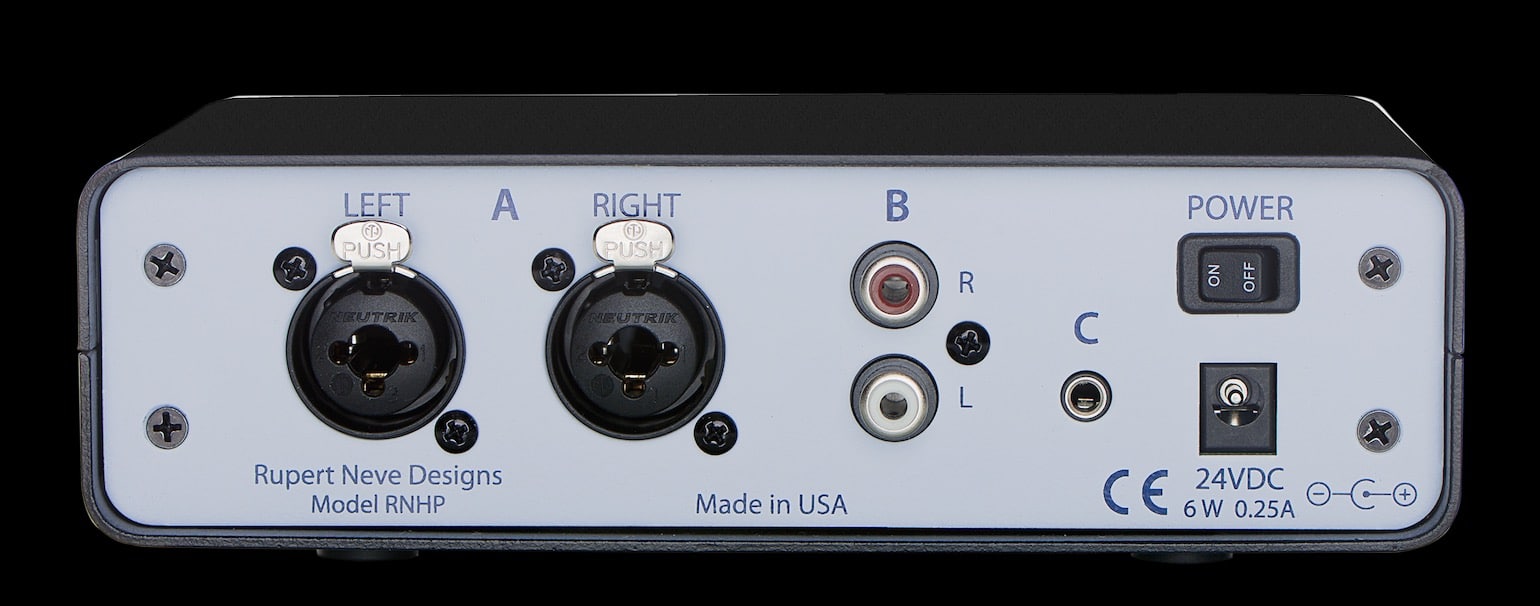
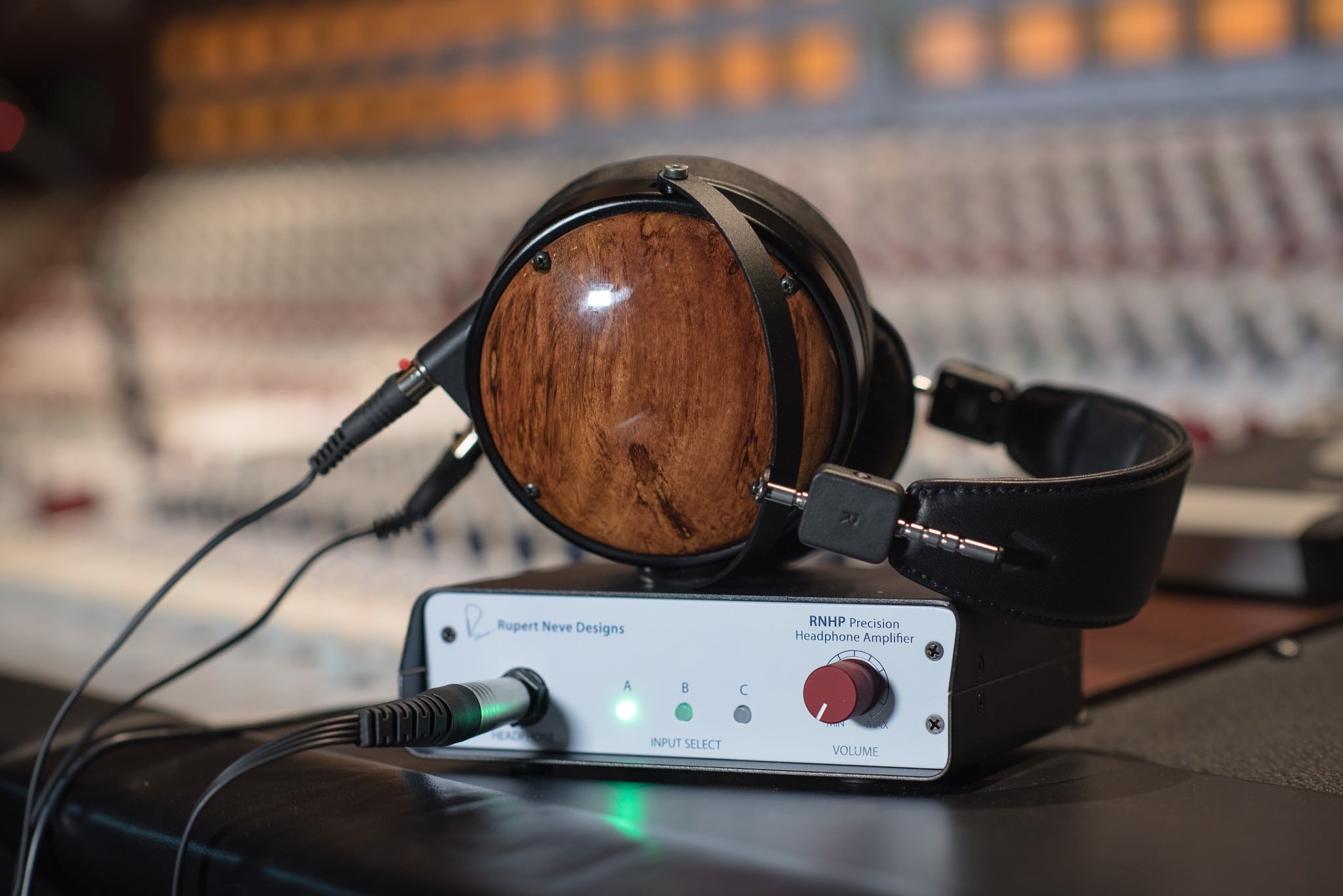
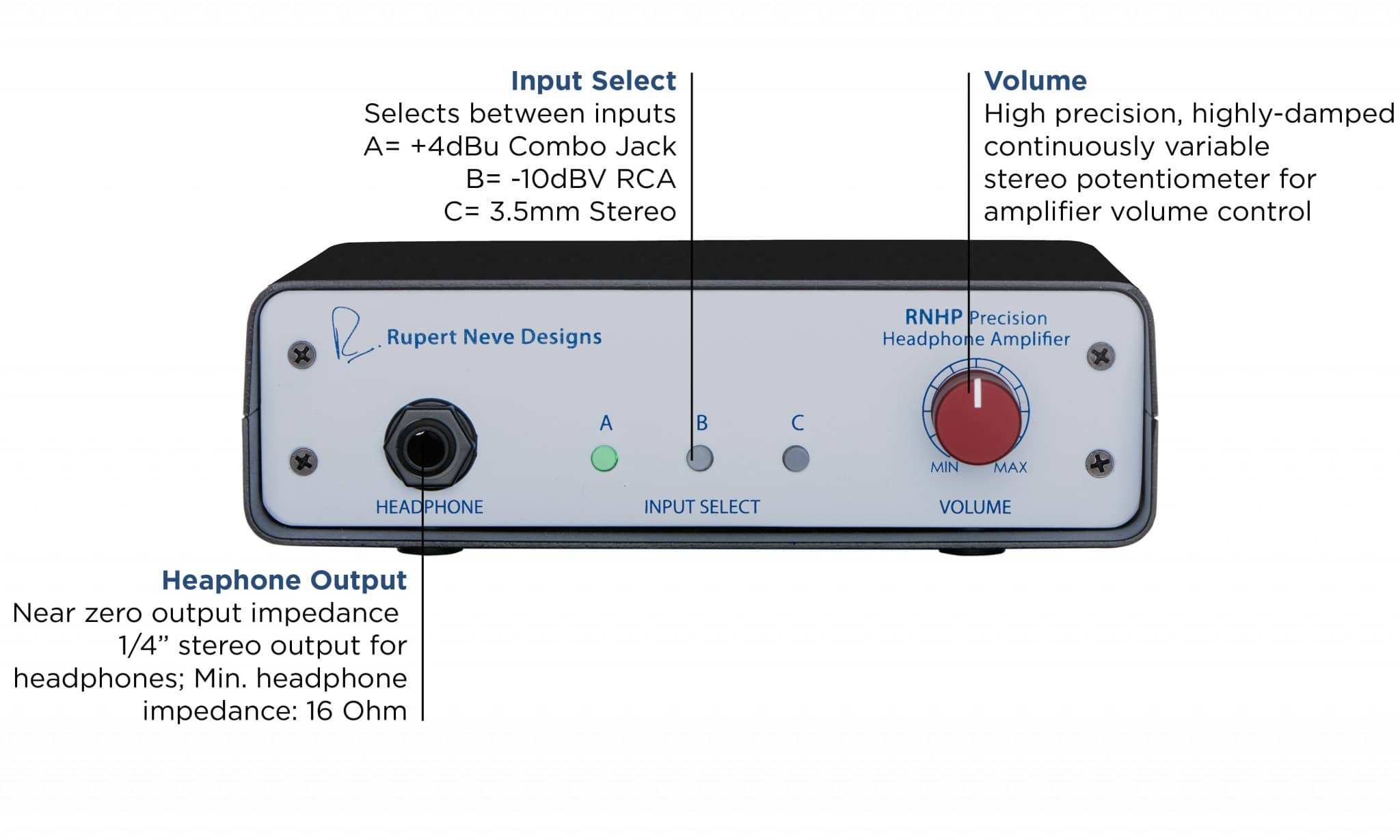
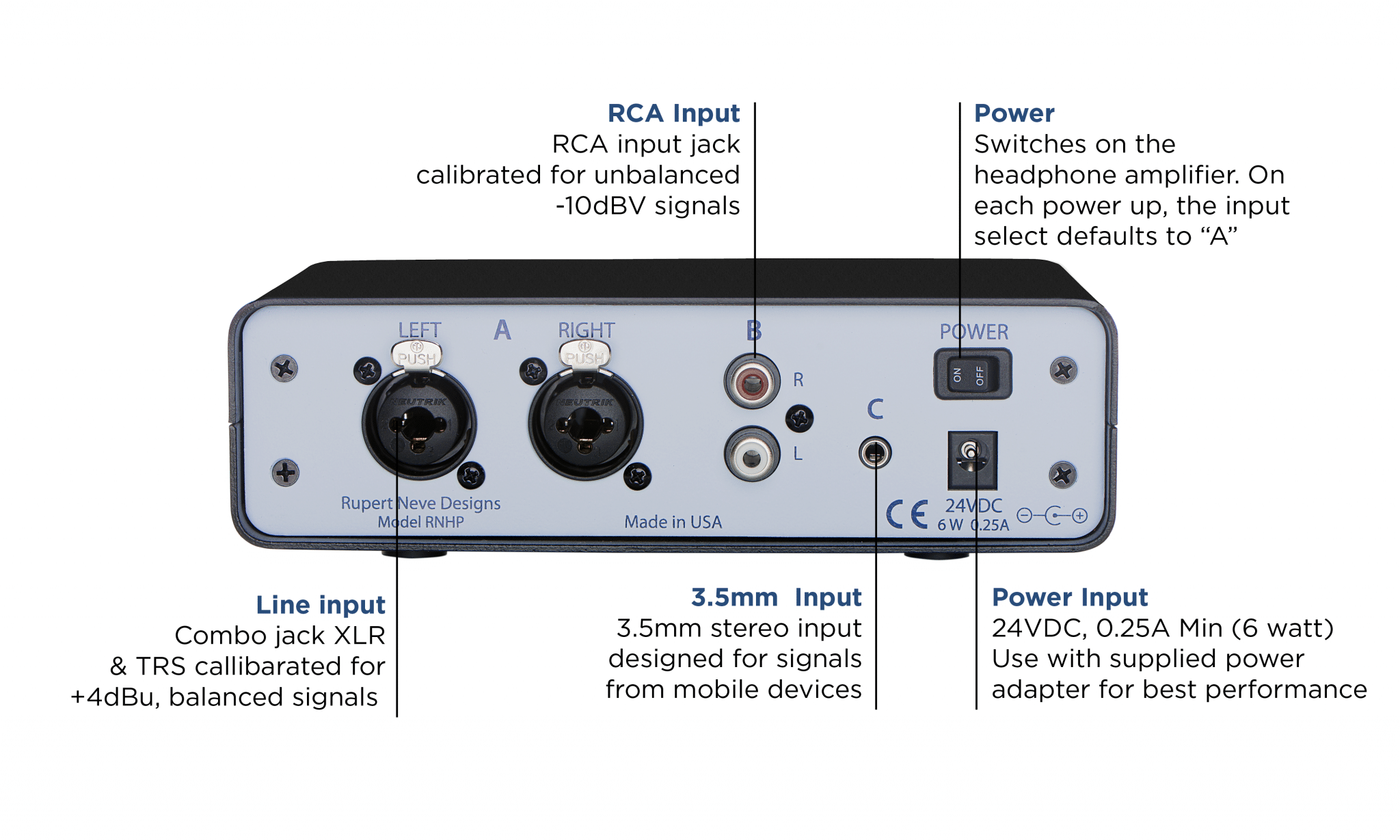
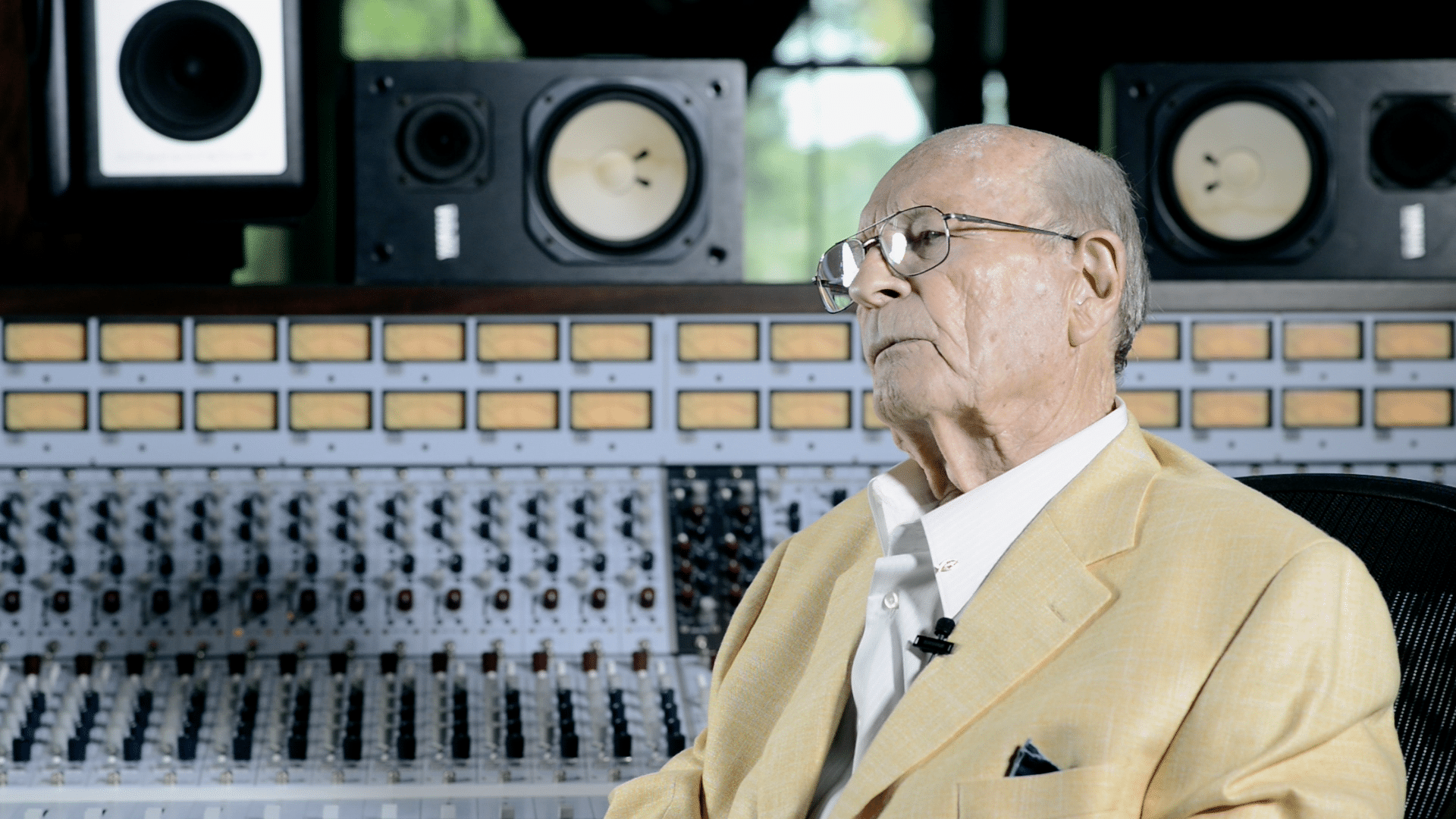

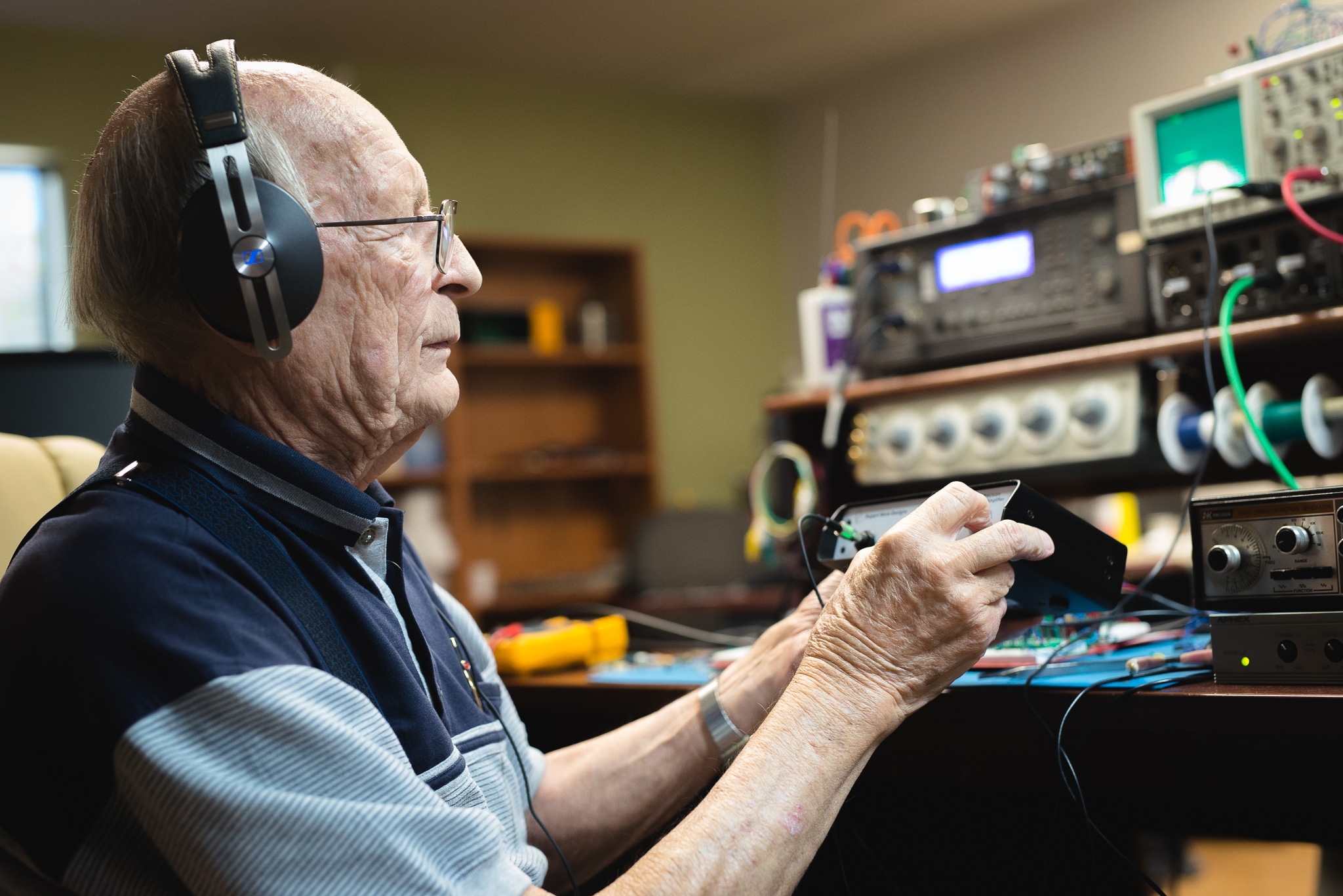
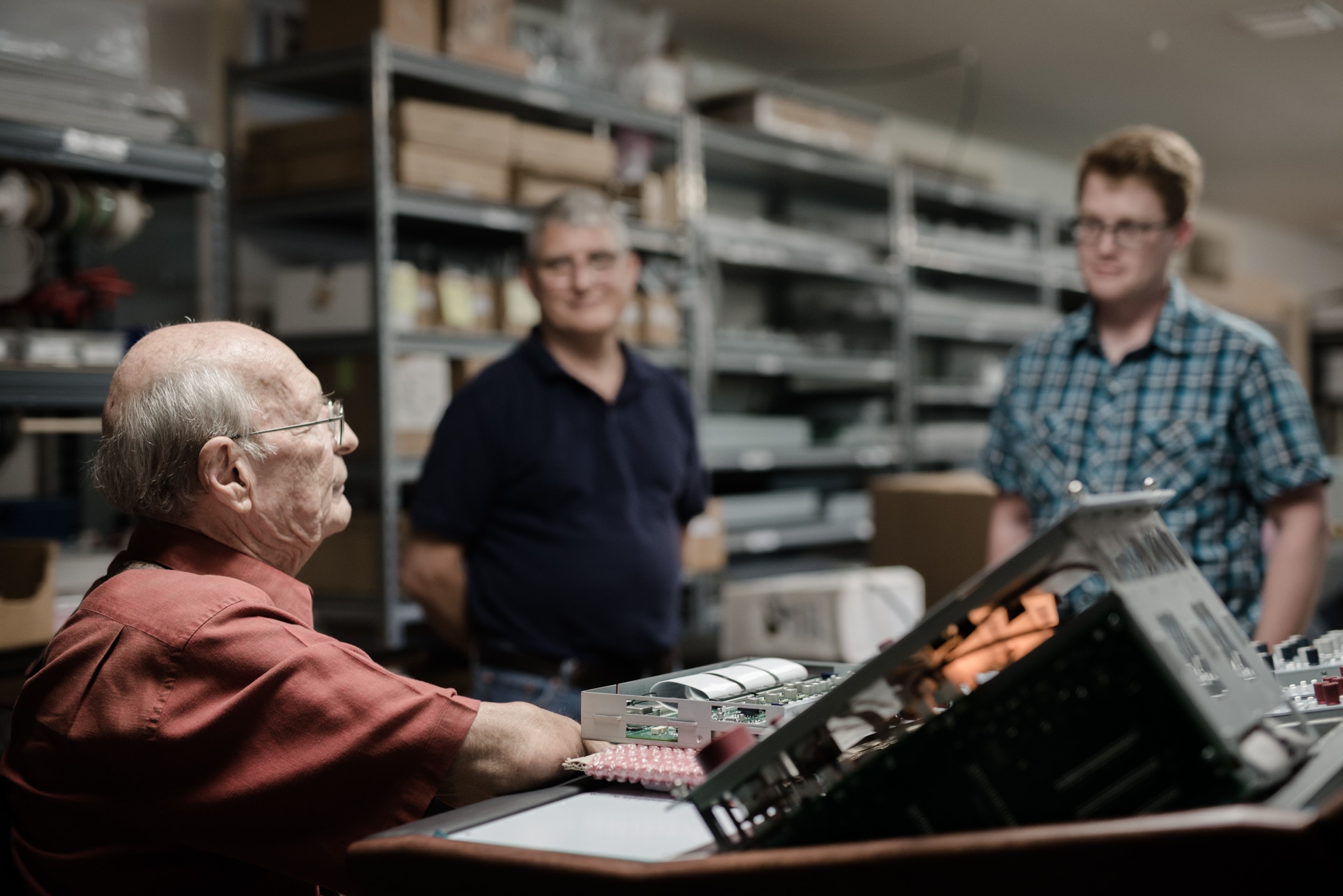
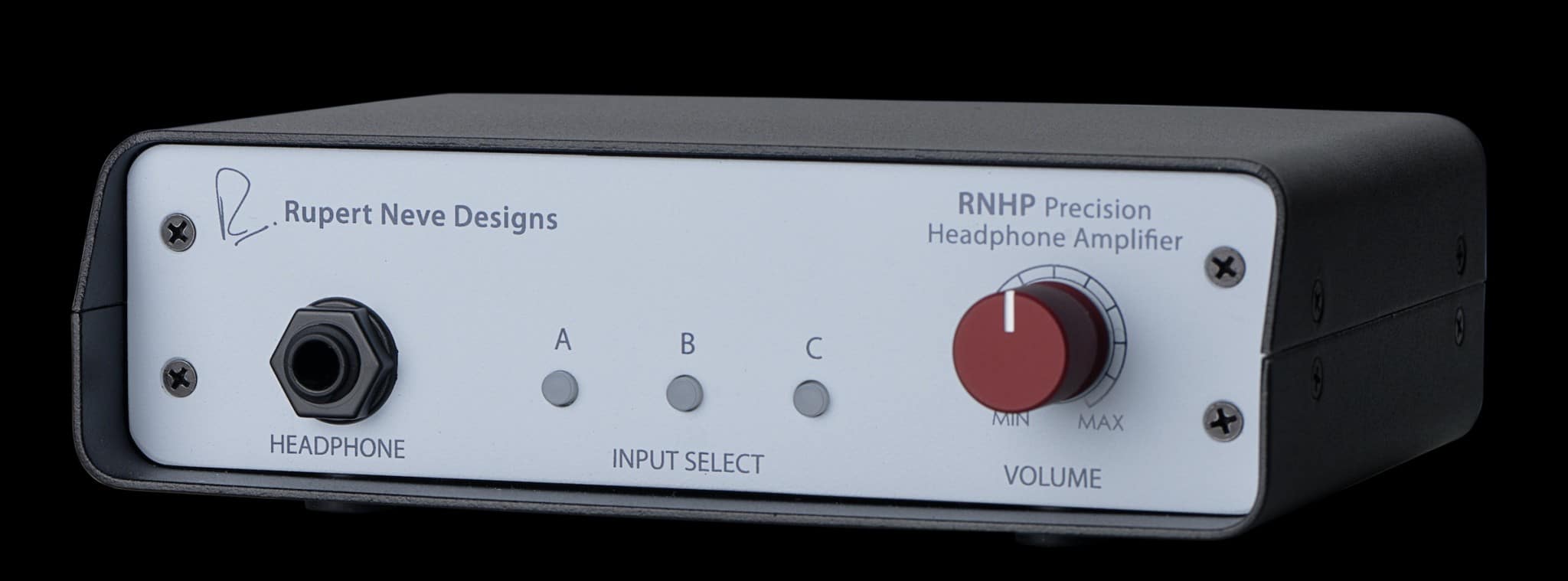
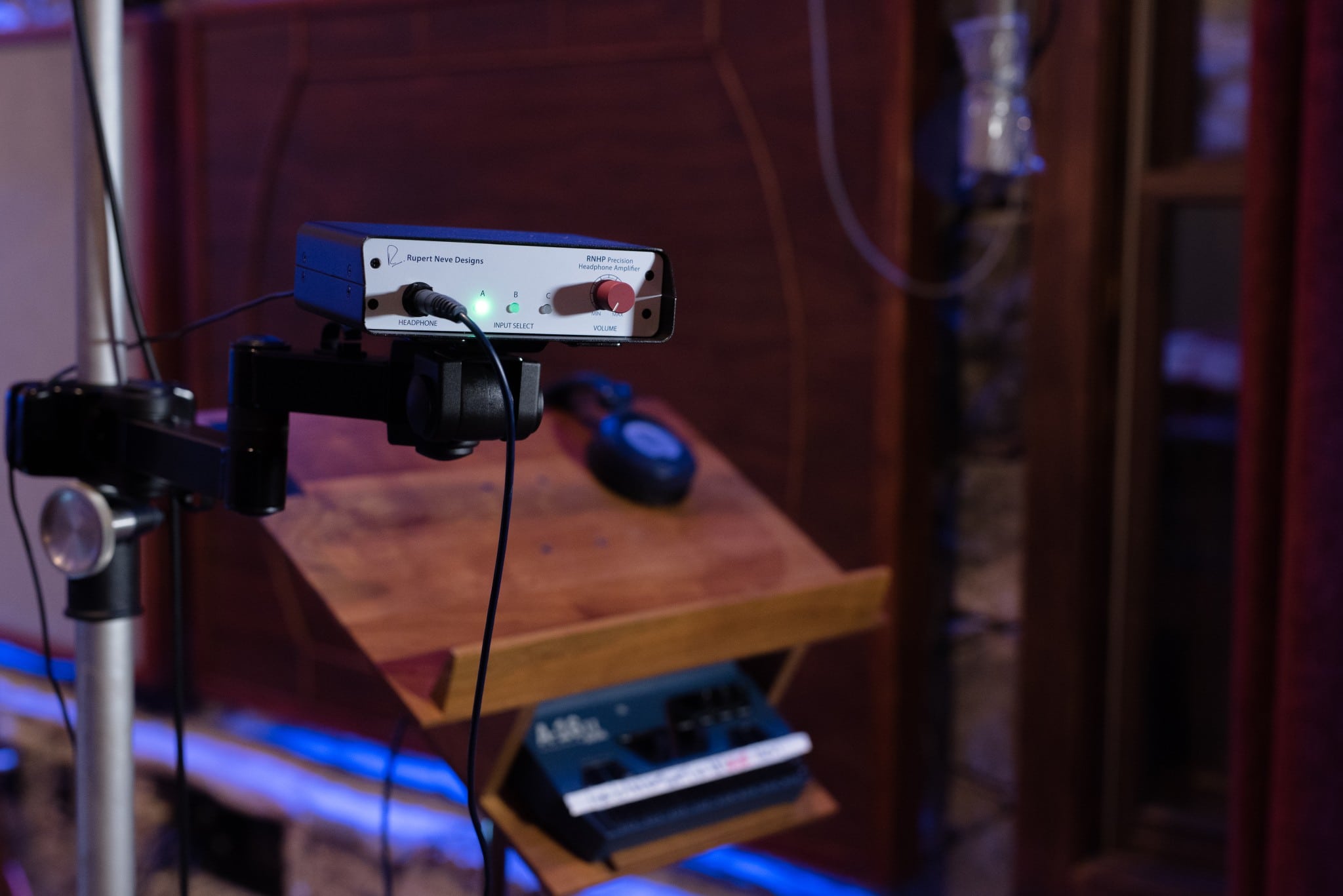
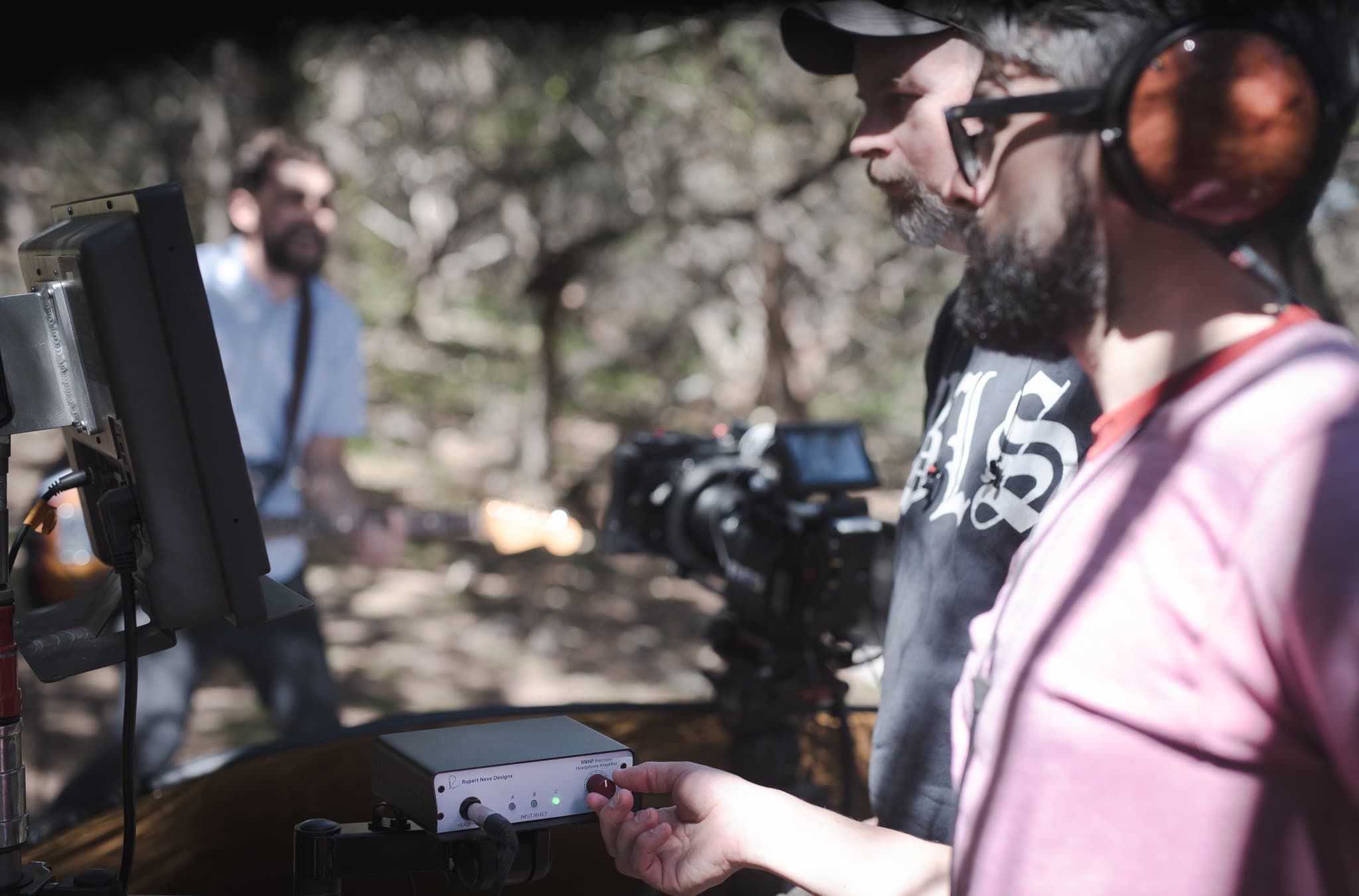
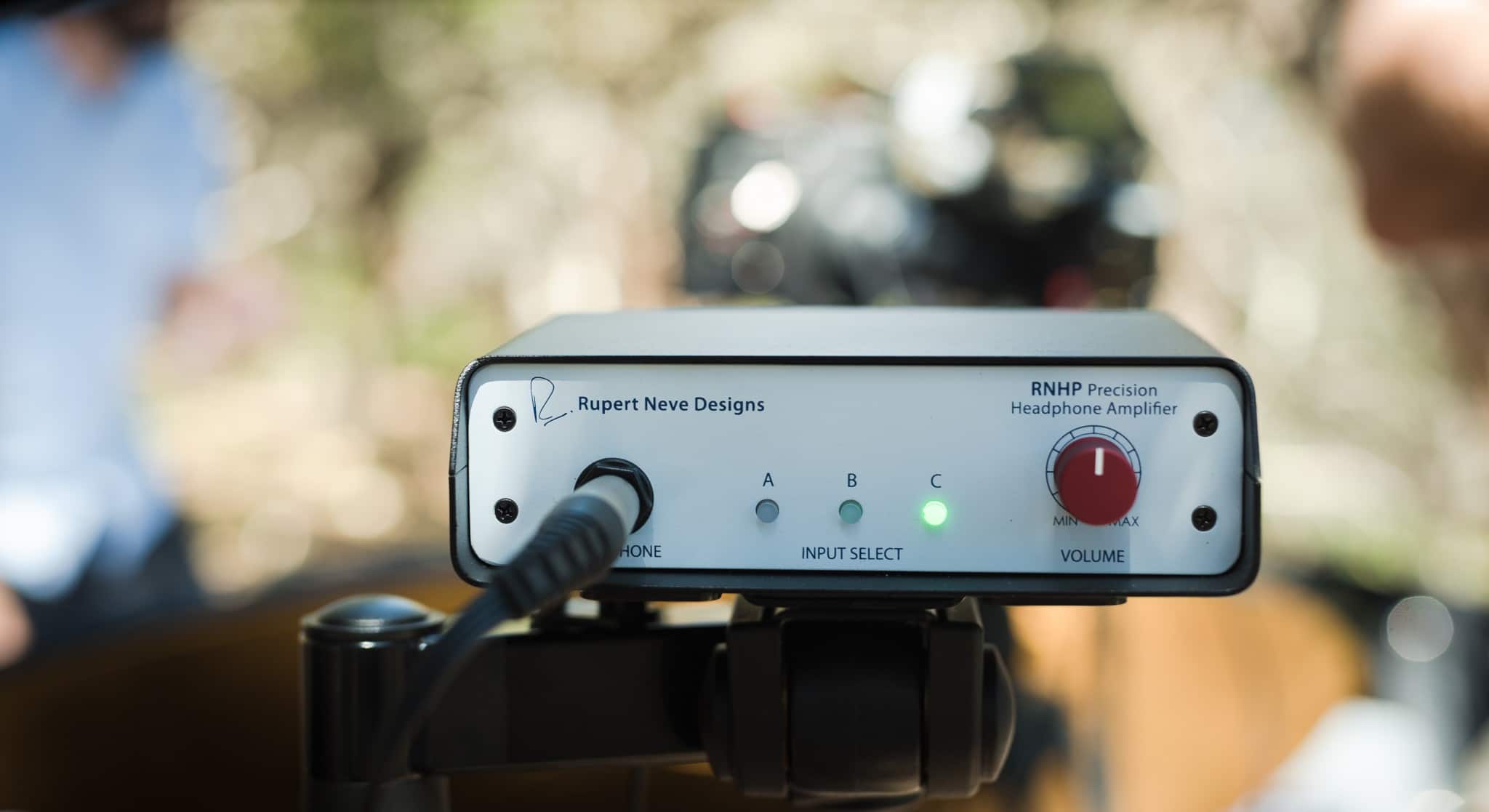
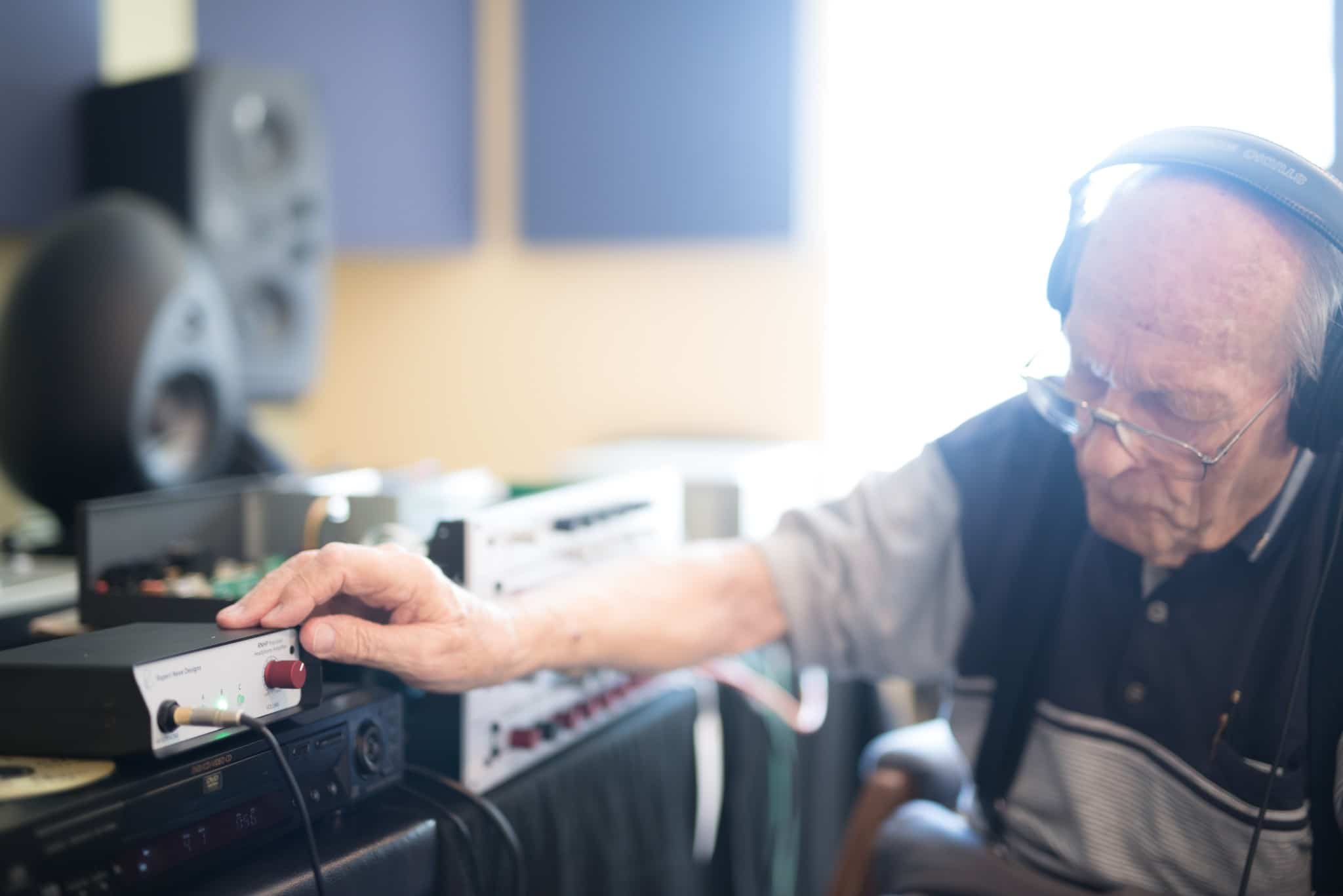



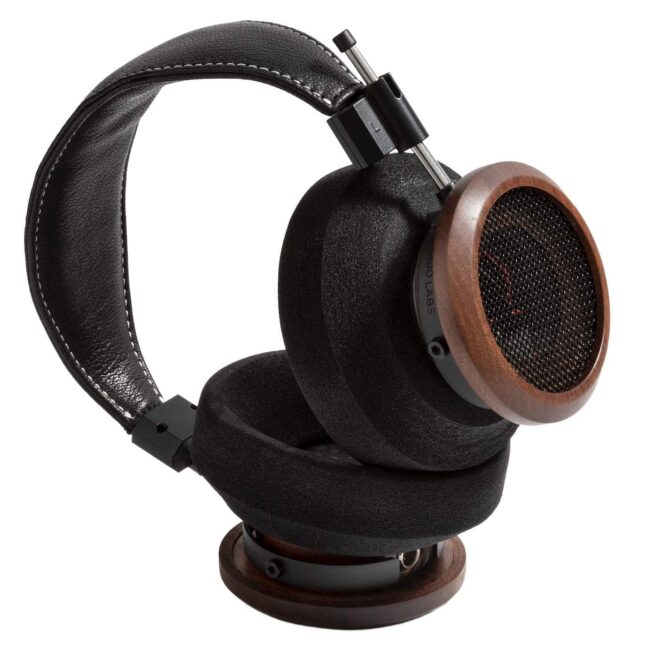
I very enjoyed listening to headphones since I was 10 years old. I’ve never heard any headphone amplifier,except for Bryston’s bha -1, that can drive a load over 300 ohms to satisfying volume settings. Am I missing something? Does the 600 ohm headphone have an audible difference other than I can’t hear?
Nice looking lab style amp. I’m going to find out if a north American sells them.
Thanks
No, most of the best headphones are 300 or below.
Well, the sound quality report itself is listed above but the extra Ohms just give it a but more legroom in terms of driving a wider array of phones.
Funny, when I worked for Rupert as a project engineer on Focusrite sound desks he said I could not use Switch mode power supplies on the desk that was ordered by Electric Ladyland studios because they would lift the noise floor by 6dB. What changed? We had huge problems with heat management which could have been solved by using switch mode.
I have no idea Nick but thank you for the insight and the fascinating point that you’ve made. I scratch my chin all the more…
Uh, the console at Electric Ladyland studios is approximately 200 times bigger and more complicated than the Portico headphone amp. So a power supply that wouldn’t work for the former is clearly not a problem for the latter. And audiophiles like yourself have to come to terms with the fact that recording studios are rarely setup to audiophile standards, they’re set up to price points where their owners are satisfied great recordings can be made; they generally stop before reaching a point of diminishing returns. Furthermore, recording gods like Hendrix (original owner of Electric Ladyland) used $2 coiled guitar cables to record their enduring tracks with. So lighten up on the switching power supply!
Thank you so much for the extremely useful review. As a long time buyer of “consumer” audio goods I hadn’t heard of Rupert Neve, although I have had some pretty pricey and good sounding setups in 30 years.
Your cogent interview of Mr. Neves and subsequent description of the audio qualities of the RNHP encouraged me to check one out.
After many years of maintaining a fairly high end analog system back when that was the only way to get good sound at all, I gave it up as too time-consuming (and got a bit older) and bought an iPod and enjoyed music for it’s own sake. I figured that I would have to settle for having access to digital music and forego the “high end” experience.
Now the emergence of amazing digital sources has at my age (65 ) reawakened and as a matter of fact enhanced my musical experience. I bought the RNHP to check out with my beloved HD800s. I recently picked up an Onkyo DP-X1. Using the ACG balanced out into the Sennheisers provides me with better detail and listening experience than I ever had with a multi $$$ system stuffed into a practical room.
So to summarize, the RNHP is extremely satisfying with the HD800s and I am so glad that I found your review. Cheers!
Hi Fred
I can certainly sympathise with your wish to ‘listen to the music’. Too many hifi people are in this game for the hardware and not the music. Music is the point of all this, of course. Glad you’ve found a workable system and thanks for your kind words.
I read in another review that this amp struggles with low impedance headphones, say 32 ohms for instance, is this true? Not certain what the impedance of the headphones were in this review. I would think that the low impedance headphones would be easier to drive , as opposed to a 600 ohm headphone. If I can find review, I’ll post a link. I’m thinking of buying it to drive my AKG k550, audioquet night hawk/owls, and my sennheiser hd 600’s.
Let me ask the company Joseph because its been a while since I looked at this one and my memory is foggy – may take a while to get and answer so please be patient
Thank you Paul, I appreciate that!. I may give it a go anyhow to see for myself, as it can always be returned if it does not work out.
Blimey, that was quick – I’ve just received a reply!
“So all I‚Äôve done is a bit of googling and can‚Äôt find anything negative about the RNHP with low impedance headphones. Lots of people seem to use it quite successfully with 32ohm headphones, the Audeze LCD seem to be particular popular. Of course.. it would help to see the review that the person is referring to, to understand the context of the comment.‚Äù
Hope that helps a bit, Joseph
Hi Paul,
Hope you and your family are all well.
I am looking to buy a headphone amp to drive my sennheisser 600’s .I only use headphones for about 20% of my listening and would like to ask a question regarding the Neve as it is the only headphone amp you have awarded 9/10.Is there anything at the price (below ¬£1000) that is in the same or better sound quality bracket?
All the best for 2022
Kind regards,
Mike.
H Mike – yes, the Icon Audio HP8 Mk.II.
Hi Paul,
Thank you, I have only just seen your reply as our internet is playing up ( central London ! )
I am happy it’s the Icon, glowing bottles.
Cheer’s
Mike.
Bonjour avez vous un avis comparatif avec le M900 de chez Grace Design ?
Je n’ai pas encore pass√© en revue le Grace, j’en ai peur, mais je garderai un ≈ìil sur un √©chantillon d’examen. Merci.
Hi Paul, I was wondering (purely out of interest) what headphones you used in your review? You list the reference system used but I couldn’t see any mention of what the headphones were.
On the question of low impedance headphones the RNHP is for anything above 16ohms according to their website.
Peter
I didn’t say, did I Peter? I should of – from memory I think I was using Sennheiser HD650s and one other, I may have used something I had on loan for a short time. Dan Clarks maybe? Well, they had a different name back then but possibly those. Not sure but certainly the Sennheisers.